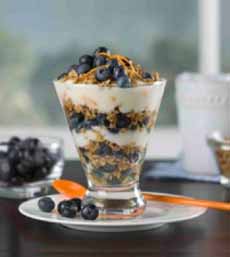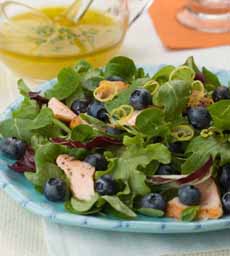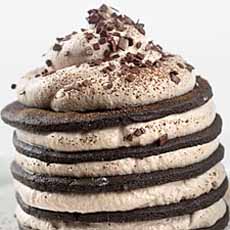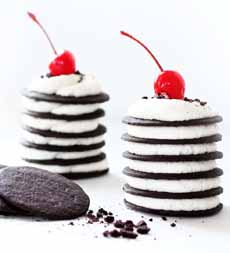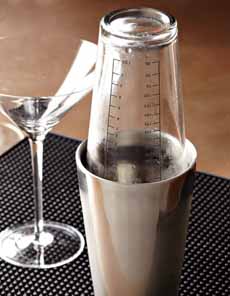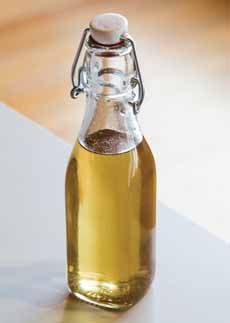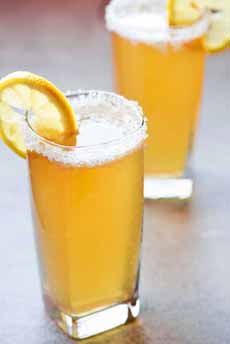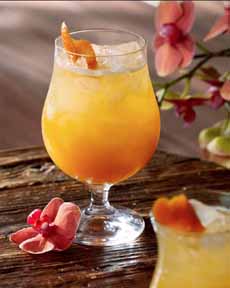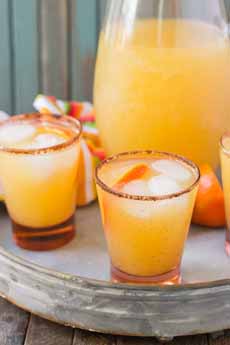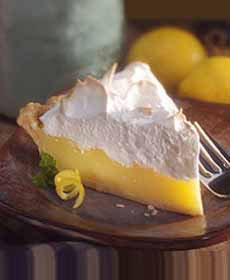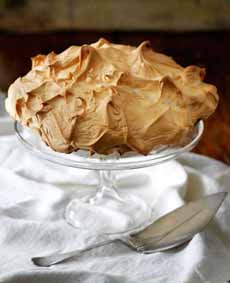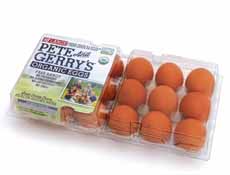|

[1] The original ice box cake was made by Nabisco. Wafers and whipped cream were assembled and then frozen, to make cutting easy. After the taller cake became popular, the original version was named Refrigerator Roll (photo courtesy Nabisco).

[2] The cake evolved into the classic Nabisco Famous Chocolate Wafer Ice Box Cake, a tall affair that was impressive to look at, but not so neat to cut (here’s the recipe from The Very Kitchen).
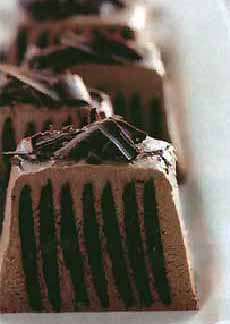
[3] In recent decades, cooks got creative, substituting chocolate whipped cream, strawberry whipped cream and other fruit flavors, and adding layers of fruit on top of the wafers (photo courtesy The King’s Cupboard).
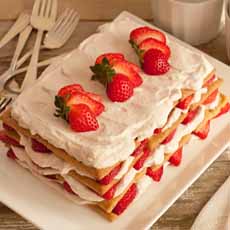
[4] In the last decade or two, fruit crept into the recipe, exemplified by this Strawberry Ice Box Cake from Cabot Co-op (recipe).
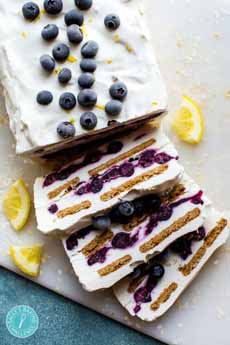
[5] Home cooks got even more creative with the ingredients, as in this Lemon Blueberry Ice Box Cake recipe from Sally’s Baking Addiction. |
|
Ice Box Cake has long been popular on a hot summer day: No hot oven required.
Instead, wafer cookies—the thin, flat kind—are layered with whipped cream and refrigerated for 4 hours or more. Moisture from the whipped cream softens the cookies, turning them into with individual refrigerator cakes.
Nabisco Famous Chocolate Wafer Cookies date to the 1930s: very thin, crispy chocolate cookies that were used for icebox cakes and chocolate crumb crusts.
The Ice Box Cake was created by Nabisco home economists and printed on the wrapper—as so many iconic American recipes were—to sell more product!
We’re not talking general recipes: Oatmeal cookies existed long before Quaker Oats printed a recipe on its label. We’re talking inventions:
Chex Party Mix from Chex Cereal
Cream Cheese Frosting from Philadelphia Brand Cream Cheese
Green Bean Bake from Campbell’s Mushroom Soup
Green Bean Casserole from French’s Crispy Fried Onions
Key Lime Pie from Borden’s Sweetened Condensed Milk
Magic Bars from Eagle Brand Condensed Milk
Marshmallow Treats from Rice Krispies*
Onion Dip from Lipton Onion Soup
Pineapple Upside Down Cake from Dole Canned Pineapple Rings
Toll House Cookies from Nestle’s Semi-Sweet Chocolate Morsels
There are hundreds of examples, and a number of cookbooks that feature these recipes from boxes, bottles, cans and jars. They were typically developed by home economists at the manufacturing company, but others came from home cooks (German Chocolate Cake, Marshmallow Treats and Toll House Cookies are some examples).
________________
*Created by Mildred Day, a Campfire Girls counselor and Kellogg’s employee, who created the recipe to help her Campfire Girls raise money.
THE HISTORY OF NABISCO FAMOUS CHOCOLATE WAFER COOKIES
Dating to the 18th century, wafer cookies were made by home cooks and later by bake shops. By the 20th century, they were popular enough to make their way into commercial manufacture.
The first manufactured chocolate wafers—Nabisco’s Famous Chocolate Wafers—debuted in 1924. The company sold a tin of three flavors: chocolate, ginger and sugar wafers.
When Nabisco transitioned to cardboard packaging around 1930, the other flavors were dropped and the Famous Chocolate Wafer boxes were printed with the recipe for Icebox Cake. In the first iteration (photo #1), a log of chocolate wafers separated with whipped cream, that was then frozen.
From that moment, Chocolate Ice Box Cake was a hit. It could be made equally well by experienced cooks as well as housewives who rarely entered the kitchen (or if they did, were not known for their culinary gifts).
Delicious any time, it was a godsend in summer months, when, before the dawn of widespread air conditioning, no one had the desire to turn on the oven. The recipe was enlarged to a “layer cake” format (photo #2).
Separately, the wafers were crushed and used as crusts for pies and cheesecakes, and as dessert garnishes.
While ice box cake is an American invention, is a descendant of the charlottes and trifles that date to 17th-century Europe.
Here’s the longer history of ice box cakes, charlottes and trifles.
MODERN ICE BOX CAKE IDEAS
With today’s ice box cakes, anything goes, with:
Overall cake flavors: lemon, matcha, mocha—create your favorite flavors with choices of whipped cream and fruit.
Fruit: Add berries or sliced stone fruits (cherries, nectarines, peaches, etc.).
Whipped cream flavors: Whip up some flavored whipped cream—bourbon, citrus, lavender, mint, peppermint, spice, etc.
Cookie types: Graham crackers have become popular; and you can bring back the ginger wafers with Anna’s Swedish Ginger Thins, lemon thins, etc.
But do keep the cookies thin. The thinner the cookie, the more likely it is to dissolve into a soft, cakey texture. That Toll House or oatmeal cookie doesn’t work: Save them for ice cream sandwiches.
Garnishes: chocolate shavings or chips, cinnamon, cocoa powder, coconut, candied ginger, etc.
You can turn the garnishes into food fun: a “decorate your own” approach. Provide bowls of:
Blueberries or raspberries
Chocolate shavings
Chopped nuts
Maraschino cherries
Sprinkles or confetti
Sugar dragées, glitter, pearls (white or Callebaut Crispearls— chocolate-covered cereal balls in dark, milk and white chocolate)
Other garnishes of choice (Gummi bears, anyone?)
|
BAKE YOUR OWN CHOCOLATE WAFERS & MAKE INDIVIDUAL STACK ICE BOX CAKES
These days, with all the competition on the supermarket shelf, it can be hard to find Nestle’s Famous Chocolate Wafers. Thank goodness for online shopping.
But how about making your own? They’ll taste even better.
Here’s a recipe from King Arthur Flour. Prep time is 30-50 minutes, bake time is 20-22 minutes.
Whether you bake them or buy them, you can make individual refrigerator cakes by making single stack of wafers and cream instead of a larger cake. You need to refrigerate them at least 4 hours before serving, or overnight.
This recipe makes 3½ dozen, 2½-inch cookies.
RECIPE: HOMEMADE CHOCOLATE WAFERS FOR ICE BOX CAKE
Ingredients For 8 Individual Stack Cakes Or 1 Large Cake
For The Wafers
1 cup granulated sugar
1/2 cup unsalted butter
3/4 teaspoon salt
1/2 teaspoon baking powder
1 teaspoon espresso powder
1 large egg
1 teaspoon vanilla extract
1-1/2 cups unbleached all-purpose flour
1/4 cup black cocoa†
1/4 cup Dutch-process cocoa
For The Filling
2 cups (1 pint) heavy/whipping cream
2 tablespoons Dutch-process cocoa
2 tablespoons sugar
1 teaspoon espresso powder
________________
†Black cocoa is a super-dark Dutch-process cocoa from King Arthur Flour. It is used sparingly for an intense, dark color and unsweetened-chocolate highlights. This rich cocoa will make the darkest chocolate cake or cookies, but you can use the cocoa you have.
|

